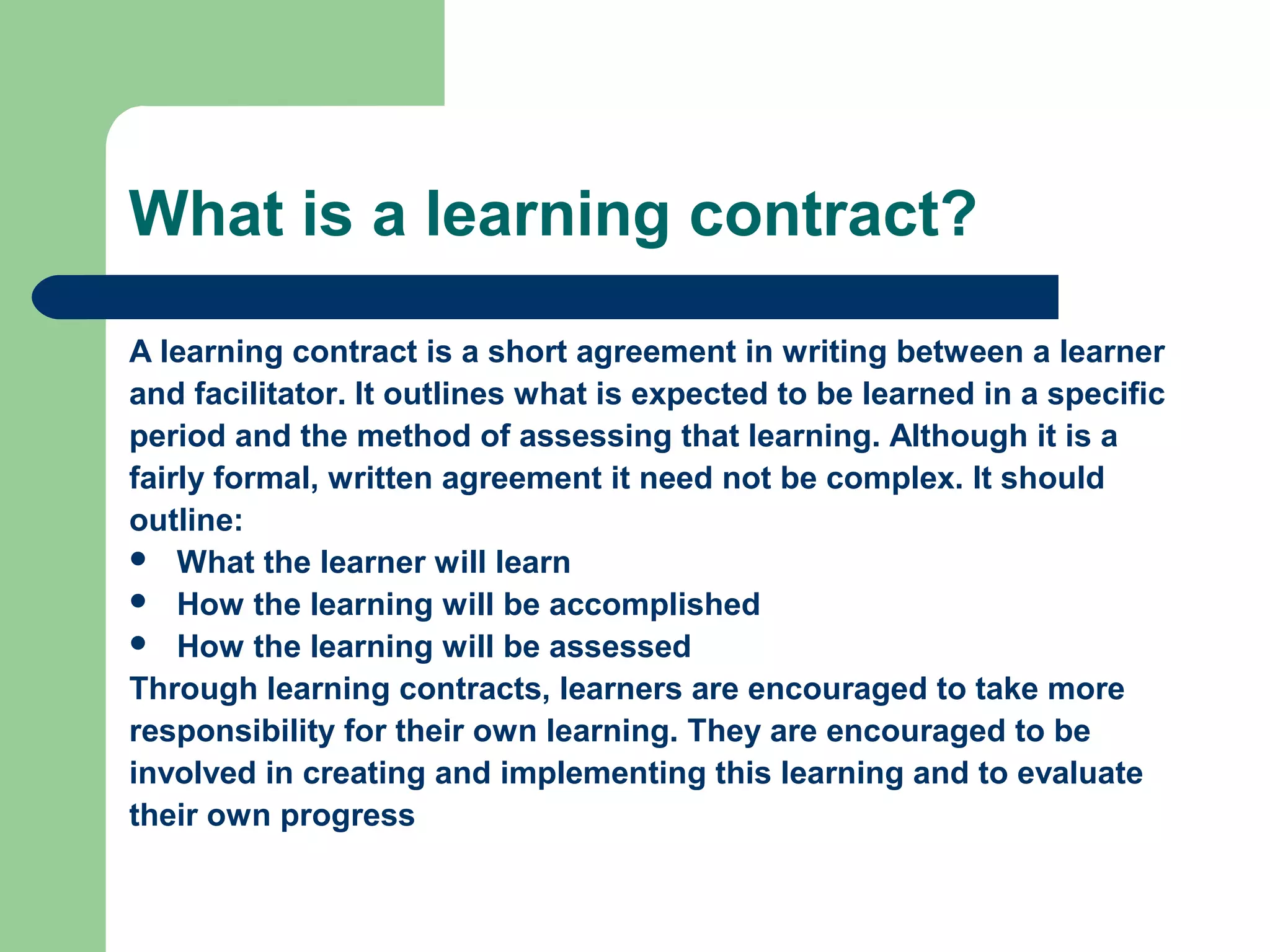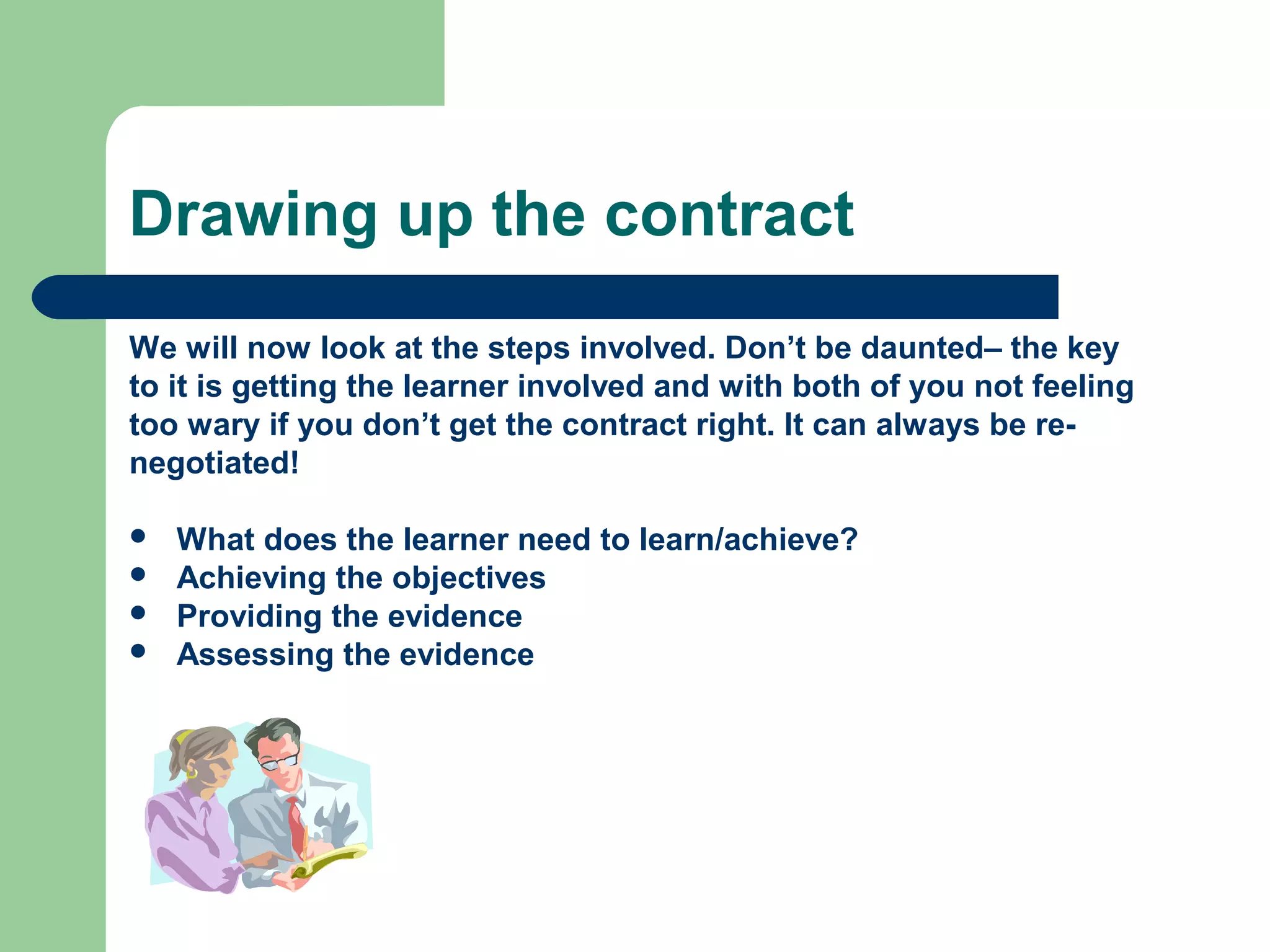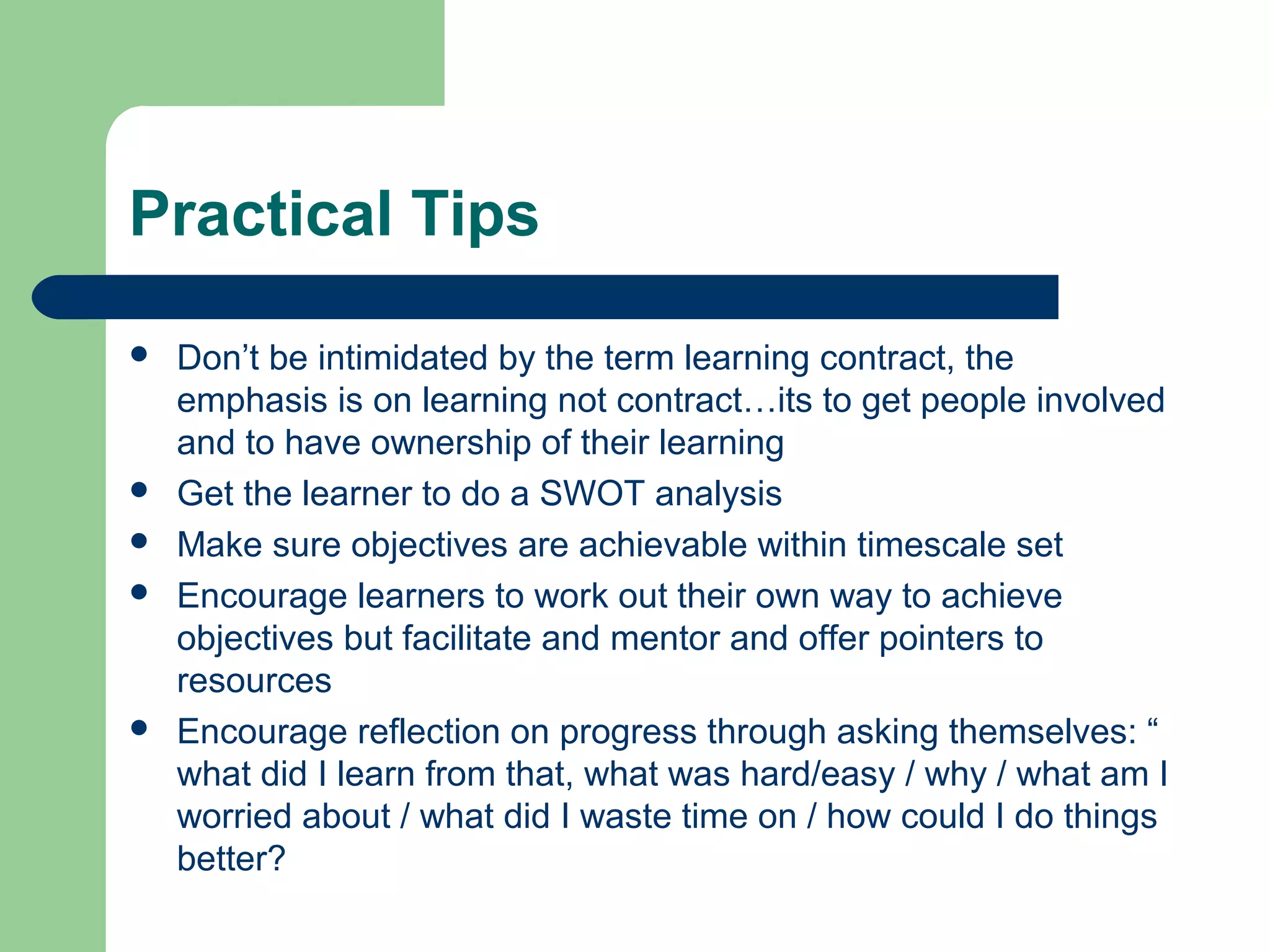The document discusses learning contracts, which are agreements between a learner and facilitator that outline what will be learned over a specific period, how it will be learned, and how learning will be assessed. Learning contracts encourage learners to take responsibility for their own learning. They can range from fully prescribed to fully self-directed, and involve setting objectives, determining how objectives will be achieved and evidenced, and how evidence will be assessed. The key is getting the learner involved in creating and implementing the contract.













